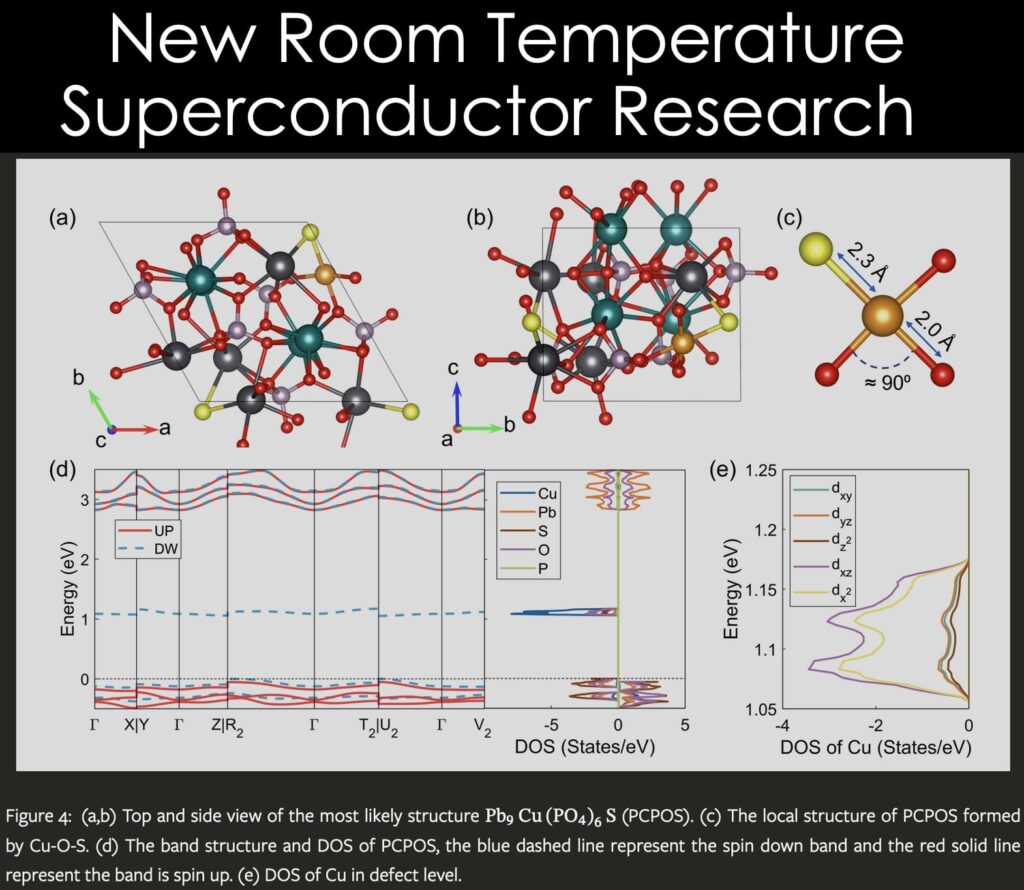The pursuit of room-temperature superconductivity has long been a holy grail in the field of condensed matter physics because it could revolutionize all electricity based technologies and in particular make computers at least hundreds of times faster. In mid-2023, the Korean LK-99 (copper-substituted lead apatite) material provided a controversial possibility of a major breakthrough. Researchers in China have made progress replicating and improving the LK99 possible room temperature superconductor material. The researchers in China have been able to do detailed and thorough work that shows physical evidence of the Meissner effect. The Meissner effect is the expulsion of a magnetic field from a superconductor during its transition to the superconducting state when it is cooled below the critical temperature. This expulsion will repel a nearby magnet. This is one of the most important features for determining if a superconductor has been found. There is a great deal of work that has to be done to show zero or near zero resistance and to prove there is full superconductor effects instead of just strong diamagnetic effects.
Researchers at the US Berkeley National Lab have stated that the experimental research on LK-99 like material has been very thorough.
The South China University researchers have a new paper.
Unveiling the Impact of Sulfur Doping on Copper-Substituted Lead Apatite: A Theoretical Study. South China University of Technology.
Room-temperature superconductivity represents a significant scientific milestone, with the initial report of LK-99, a copper-substituted lead apatite Pb10−xCux(PO4)6O, offering a potential breakthrough. However, other researchers have encountered numerous challenges in replicating the original experimental results. In recent studies, Wang et al. successfully observed signs of a possible superconducting phase, such as smaller resistance and stronger diamagnetism, upon doping S into the samples. This indicates that the introduction of S is of significant importance for achieving an appropriate structure. To further investigate the role of S, we have considered the Pb10−xCux(PO4)6S, systematically discussing its thermodynamic stability, as well as the influence of S on the distribution, concentration, and electronic properties of Cu. We find that Pb10−xCux(PO4)6S maintains thermodynamic stability, with S primarily influencing the distribution of Cu. The critical element dictating the electronic characteristics of the material post-synthesis is Cu, while the impact of S on the electronic properties is relatively minor. Our work provides valuable insights into the synthesis of potential apatite based room-temperature superconductors and the role of S in facilitating Cu doping.
China reseachers have reported observing possible signs of room-temperature superconductivity upon doping S into PPO, including the observation of a possible Meissner effect and a reduction in room-temperature resistivity from an insulating state to 2×10^−5Ω⋅m. This suggests that the introduction of S into the material may affect aspects such as Cu doping concentration, defect configuration, and electronic properties. However, the available calculations have been performed on the PPO parent compound without considering the sulfur-containing parent compound. Therefore, a systematic study is necessary. Considering the stability of the PO4 group, it may be challenging for S doping to occur within it. Previous theoretical calculations have confirmed that in a synthesis environment with excess S, S is likely to replace oxygen atoms at the center of Pb(2) site[12]. And the density of states (DOS) indicates that the contribution to the flat band primarily originates from Cu and O at the center of the Pb(2) sites. To simplify the analysis, we will only discuss the structure where S replaces the oxygen atom at the Pb(2) center in Pb10(PO4)6S (PPOS).
The research improves the understanding of the transition from PPO to PPOS as the parent material enables stable existence. The emergence of S (sulfur) atoms increases the preference for Cu to substitute at the Pb(2) sites. Additionally, the configuration of Cu between different units has a minimal impact on the defect formation energy, implying that the defects may be distributed in a disordered manner. Based on the formation energy of defects, they predict the defect concentration to be approximately 0.26%. Qualitatively, the introduction of S can enhance the doping concentration of Cu. Subsequently, they calculated the electronic properties of Pb10−xCux(PO4)6O and found that upon doping with Cu, when Cu occupies the Pb(2) site, the material remains a semiconductor, consistent with the electronic properties of Cu occupying the Pb(2) site in PPO. This indicates that S has a minimal impact on the electronic properties. Finally, in light of the computational results and the experimental synthesis process, they propose that an appropriate structure for superconductivity is likely to be Pb10−xCux(PSyO4−y)6S. The role of S in this context is to aggregate the low-concentration Cu defects and form a pathway during the high-pressure reaction vessel process. However, a more systematic and in-depth discussion is required regarding the stoichiometry within Pb10−xCux(PSyO4−y)6S, as well as the stability and electronic properties of the corresponding structures.
.
Brian Wang is a Futurist Thought Leader and a popular Science blogger with 1 million readers per month. His blog Nextbigfuture.com is ranked #1 Science News Blog. It covers many disruptive technology and trends including Space, Robotics, Artificial Intelligence, Medicine, Anti-aging Biotechnology, and Nanotechnology.
Known for identifying cutting edge technologies, he is currently a Co-Founder of a startup and fundraiser for high potential early-stage companies. He is the Head of Research for Allocations for deep technology investments and an Angel Investor at Space Angels.
A frequent speaker at corporations, he has been a TEDx speaker, a Singularity University speaker and guest at numerous interviews for radio and podcasts. He is open to public speaking and advising engagements.
>>> Read full article>>>
Copyright for syndicated content belongs to the linked Source : Next Big Future – https://www.nextbigfuture.com/2024/05/south-china-researchers-progress-on-room-temperature-superconductivity-research.html
